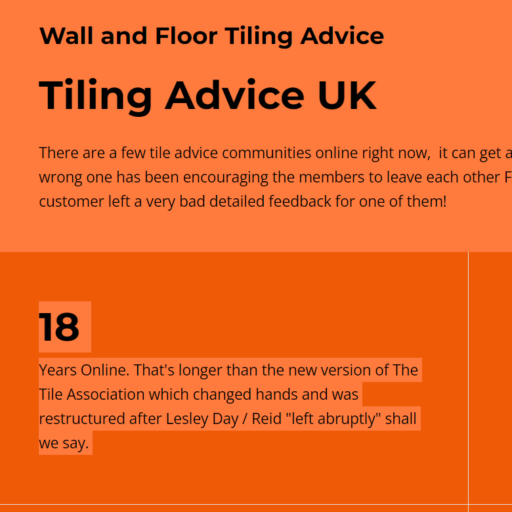There are a few ways to fix tile to bathroom walls. First you need to prepare the walls for tiling. Note that plasterboard can carry more weight. If your tiles + tile adhesive + tile grout = more than 20kg per square meter, then skimmed plaster on render isn’t going to hold the weight.
Plasterboard however, when mechanically fixed to the wall (another blog coming soon for that) can carry 32kg per square meter.
If your tiles are under 20kg then you’re fine fixing them to plaster. But you’ll need an acrylic primer if you’re then using a cement-based adhesive. As cement and plaster don’t mix. (Under a microscrope they ‘explode’ apart as the two mixes need to stay apart.
Lots of failures happen when tiles have been fixed to bathroom walls on plaster or plasterboard even, with only PVA “barrier” between them. PVA dissolves back down to a paste and mixes the cement-based tile adhesive with the plasterboard or plaster skim background or substrate.
Setting out for bathroom tiling – the dos and do-nots when it comes to fixing tiles to bathroom walls
5 Do NOTs for fixing tiles to bathroom walls
- Don’t skimp on tiles – you need 10% extra for small tiles (less than 6″ or 152mm) or 15% or anything bigger. This is for off-cuts and to enable you to set out without any skimpy slither of tiles anywhere (avoid these at all costs).
- Don’t use a ready-mixed adhesive if you’ve never done any tile fixing before. Instead use cement-based and mix small amounts.
- Don’t rush setting out. Don’t start full tile from the bath (this may result in less than half a tile from the floor or skirting – so you’d start full tile from the floor if that doesn’t leave a ‘slither of tile’ above the bath). It’s an art of its own setting out is and there is no one fixed way usually when it comes to tiling walls. Tiling around bathroom windows or doors or the bathroom suite means you may need to move the setting out around each wall until you’re happy with both horizontal and vertical grout line positions.
- Four
- Five
5 Dos for fixing tiles to bathroom walls
- Check tiling standards for more standards in tile fixing, whether to walls or floors.
- Setting out for tiling is a blog on its own (coming soon)
- ALWAYS use an acrylic primer for tiling and NOT PVA glue.
- At the end of each day wash off all tools and scrape away unused adhesive so that the tiles all finish neat so you can use those (one set) to tile above from. So you usually want to start tiling from the first full row of tiles right around the room. Using straight edge plywood strips or old skirting or architrave lengths and the likes to keep those initial first few rows of tiles on the wall. So you’re not relying on the adhesive alone to hold the tile weight.
- Five
Continuing this blog along with several others on UK Tiling Forum. These will be complete by the end of this week (so complete by May 3rd 2024)





0 responses to “10 Tiling Tips for Fixing Tiles to Bathroom Walls”